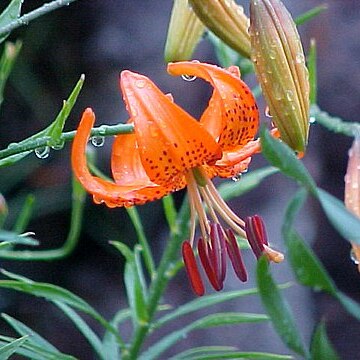A bulb plant. It grows 0.9-1.5 m high and spreads 30-45 cm wide. The bulb is flattened and round. It is 2-4.5 cm across. The scales are white. The stem is sometimes tinged with purple and is 50-100 cm high. It is densely hairy. The leaves are scattered but crowded at the middle of the stem. They are narrow and 7-12 cm long by 2-3 mm wide. The flowers can be single or 2-8 together. They are nodding. They are orange with dark purple spots. The fruit is a capsule about 3.5 cm long by 1.6-2 cm wide.

